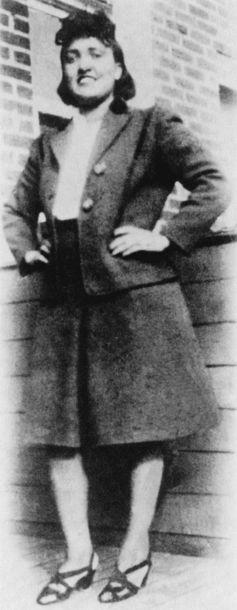Decades on from Henrietta Lacks, we're still struggling to find an adequate consent model

When 30-year-old Henrietta Lacks walked through the doors of a Baltimore hospital in 1951 to get a “knot in the stomach” checked, she couldn’t have known she was about to change the face of medical research.
After undergoing a biopsy on her “knot”, Lacks was diagnosed with cervical cancer; it was so aggressive that she died only a few months later.

But that was not the end of Lacks’s “life”. A small part of the cervical biopsy was retained and conveyed to the hospital’s tissue culture laboratory. There Dr George Gey, head of the laboratory, had been working for a few years on a system whereby human cells would continuously divide and grow in culture dishes. Gey had had no success thus far, but when he placed Lacks’s cells in culture, they behaved very differently.
Lacks’s cells survived, multiplied, grew robustly, and continued to do so for weeks and months afterwards – subsequently generating the first immortalised human cell line.
Gey never made a profit from these “HeLa” cells – named after Henrietta Lacks – but did distribute them to other scientists. Since then, the HeLa cells have been grown in countless laboratories across the globe and have now lived for twice as long outside Lacks’s body as they did inside it.
HeLa cells have revolutionised medical research, made countless contributions to medicine – from vaccine production to fertility treatment – and have been the foundation of a multi-billion dollar industry. But interestingly, Lacks’s own family were unaware of their existence until 1973.
Bio-specimens in clinical research
The HeLa story came to broader public attention in 2010, with the publication of Rebecca Skloot’s book, The Immortal Life of Henrietta Lacks. Although the book tells of the painful journey taken by Henrietta’s family, the topic of “informed consent” notably takes centre stage.
When Lacks’s cells were taken from her cervix, the practice of seeking consent was virtually unknown. Donated bio-specimens, similar to Henrietta’s cells, have been used for the advancement of medical research for centuries. But not every sample may have proven to be of as much significance as Henrietta’s.
Nowadays, biomedical research is more likely to encompass a large number of participants, and take place across multiple sites. Because of the range of data and information scientists can uncover, these participant studies help us to better understand diseases, create new diagnostic tools and personalise treatments.
The 100,000 Genomes Project, for example, is the largest study of its kind, using human samples to gain insight into rare diseases, develop accurate diagnoses and to help develop targeted therapies. To date, more than 20,000 genomes from patients and relatives with rare diseases, including cancer, have been sequenced, with the aim of passing the 100,000 genomes mark in 2018. Ambitious research like this is solely dependent on access to biological specimens, which are either voluntary donations from healthy individuals, samples taken for clinical diagnosis, or tissues collected post-mortem.
Ethics and consent
While this scientific work is exciting, and holds promises of a healthier future, the use of human bio-specimens does raise a number of legal, moral, ethical and social issues.
We, the scientists, have the responsibility of safe collection, retention, use and disposal of samples, as well as the protection of the data generated. This enormous task is constantly under scrutiny from numerous local and global committees, empowered by legislation and regulation, but ultimately it all boils down to one thing – informed consent.
When Henrietta’s cells were taken for biopsy, the concept of informed consent was non-existent. Informed consent signifies that the individual has been given full information about the research, its purpose, procedures, risks, benefits and potential outcomes, before they made voluntary decisions about their participation. This seems straightforward but there are concerns that its use does not go far enough.
Some studies are now using “blanket consent” which involves the participants consenting to all future research without limitations and conditions. Other studies opt for “study-specific consent”, whereby the specimen can only be used for the research project consent is given for.
All of these consent models have their benefits and limitations, and laws and policies are continually being challenged and evolving to fit – but it’s still not quite there.
One recently suggested solution to improve participation is “the dynamic consent model”. This harnesses information technology to allow the interactive, ongoing engagement of the participants so they can make informed choices about what happens to their cells. It means donors can be contacted to consent for further use of their specimen, as the studies develop, to maximise the use of that sample.
These complexities are posing challenges to the scientific community, especially with the increasingly global and multi-centre nature of research, and could slow down potential medical advances.
It’s a careful balancing act, and one we need to get it just right. The interests of participants who are making generous contributions to medicine must be respected, while simplifying the process in order to make the most of these precious and altruistically donated samples.
This article was originally published on The Conversation. Read the original article.

Maninder Ahluwalia does not work for, consult, own shares in or receive funding from any company or organisation that would benefit from this article, and has disclosed no relevant affiliations beyond the academic appointment above.

 Yahoo News
Yahoo News 